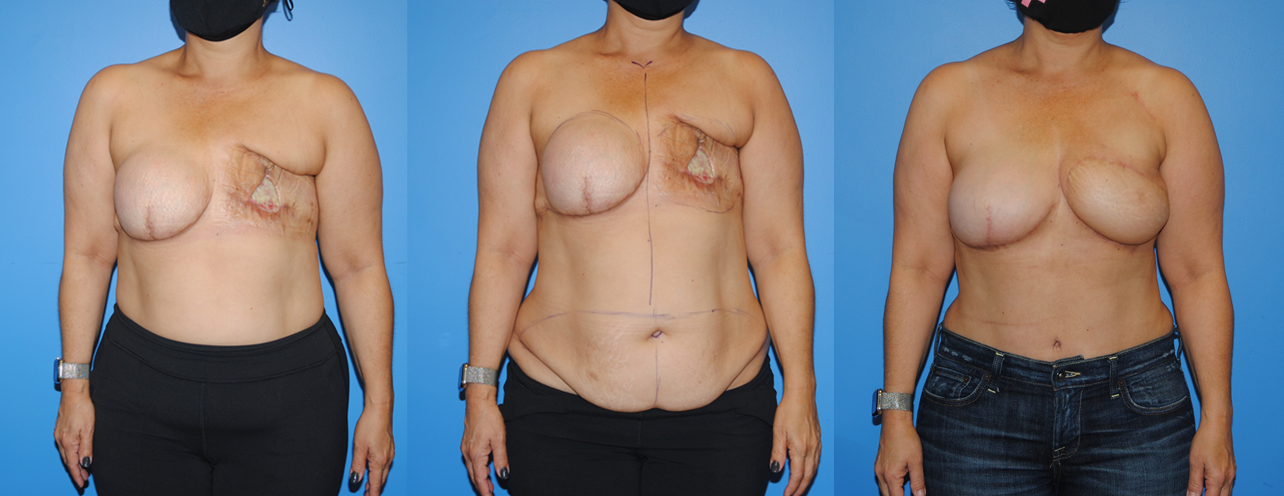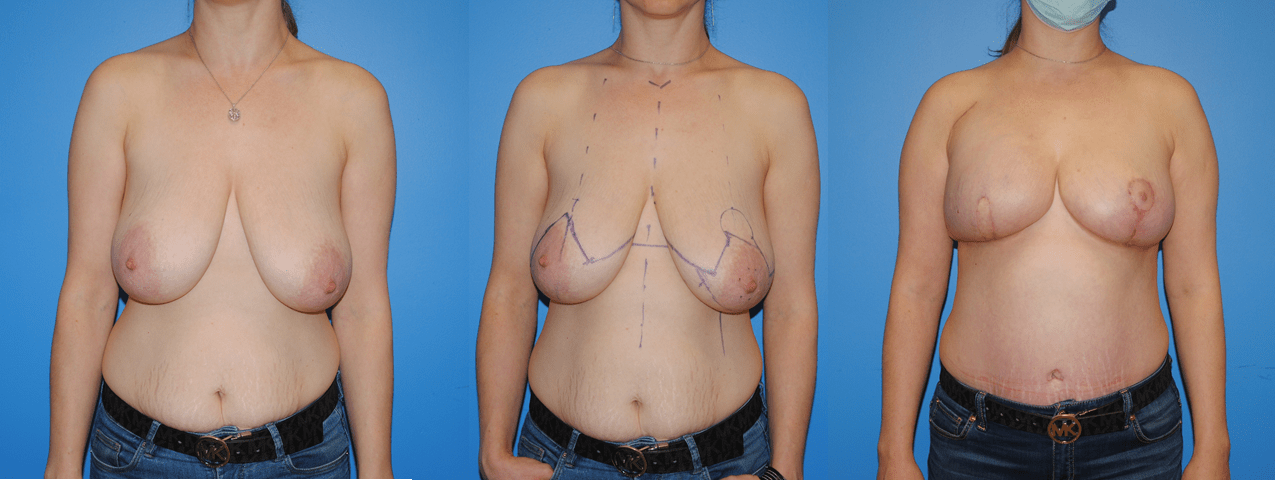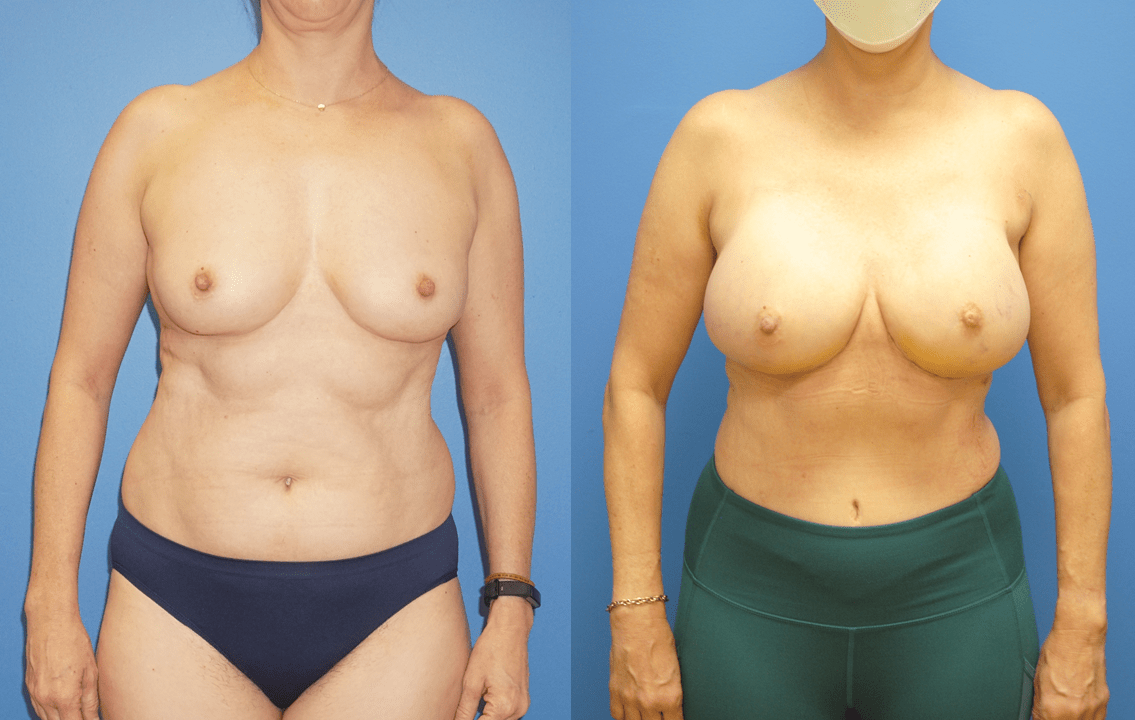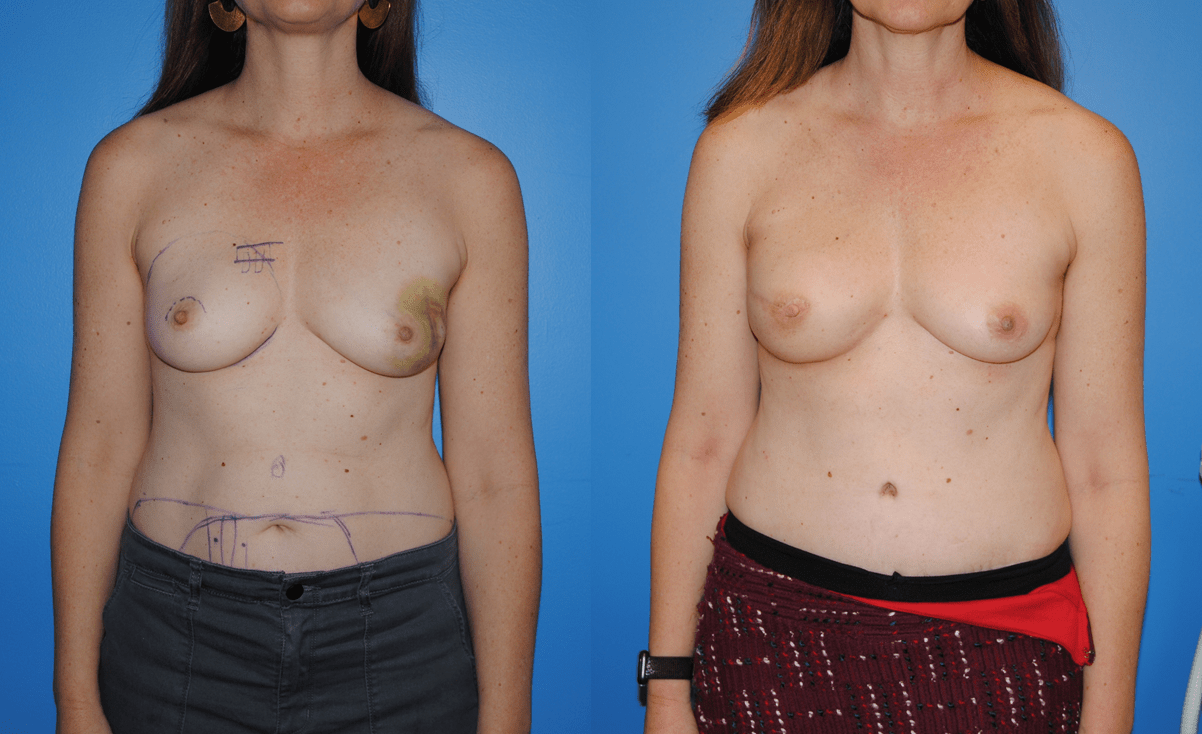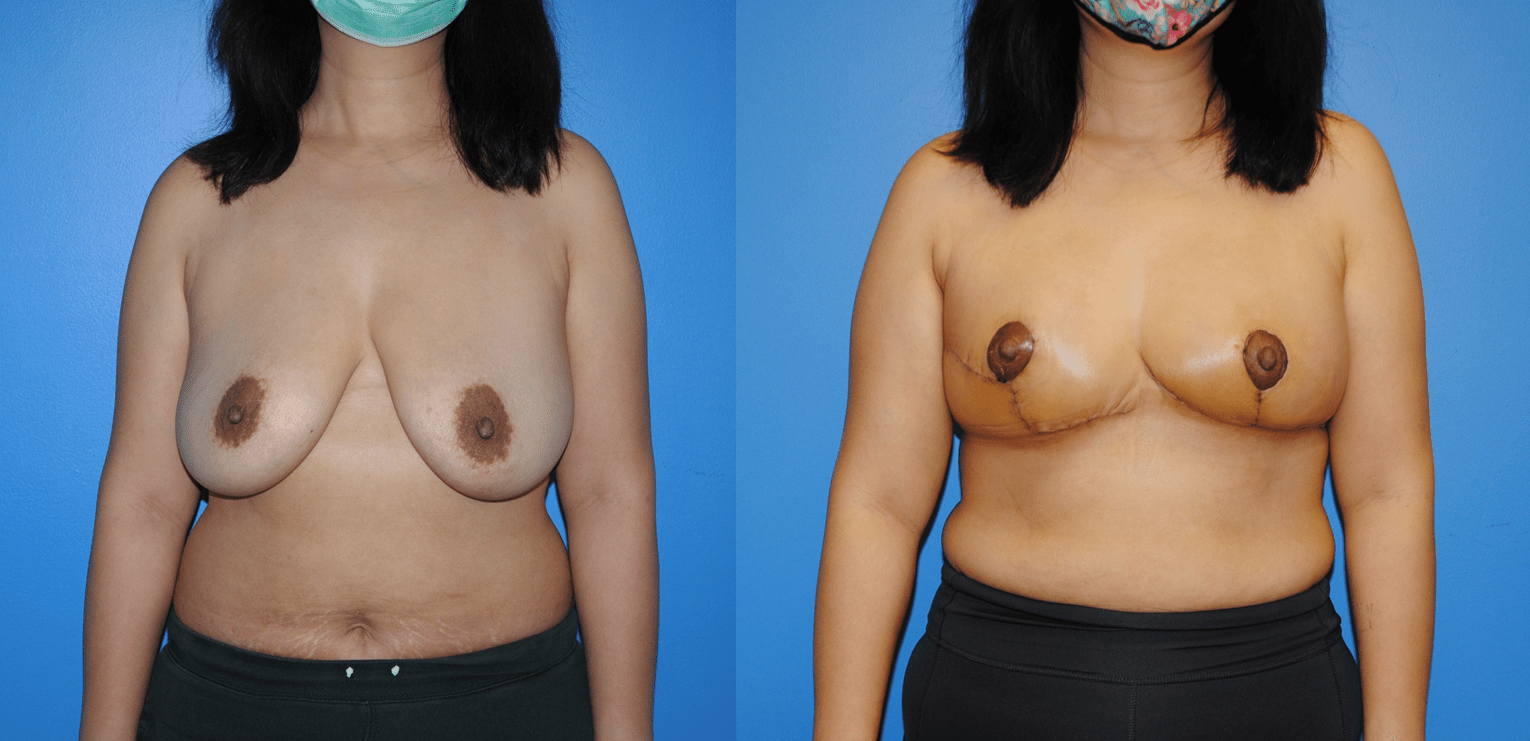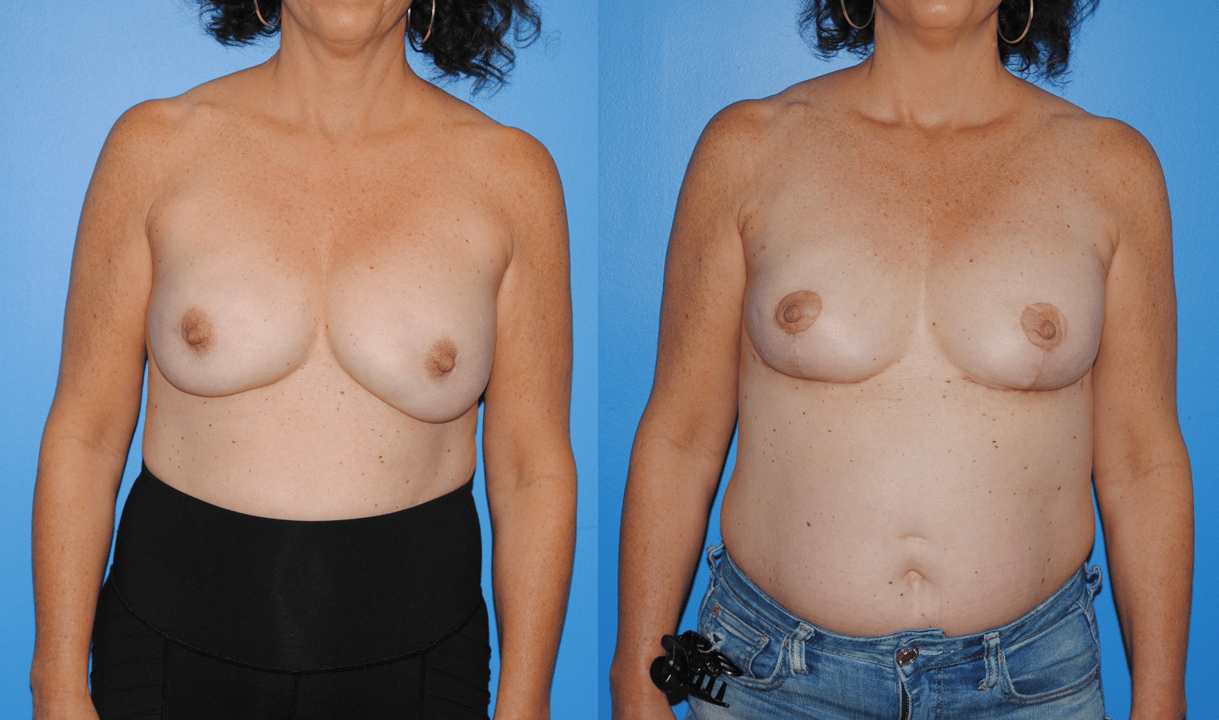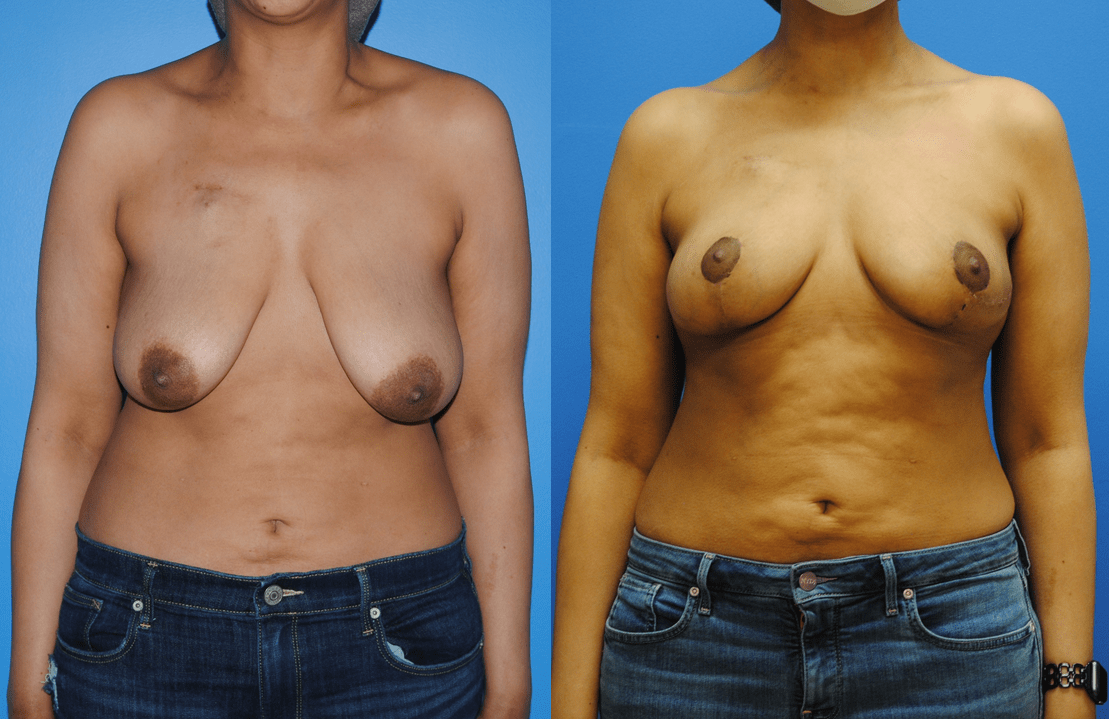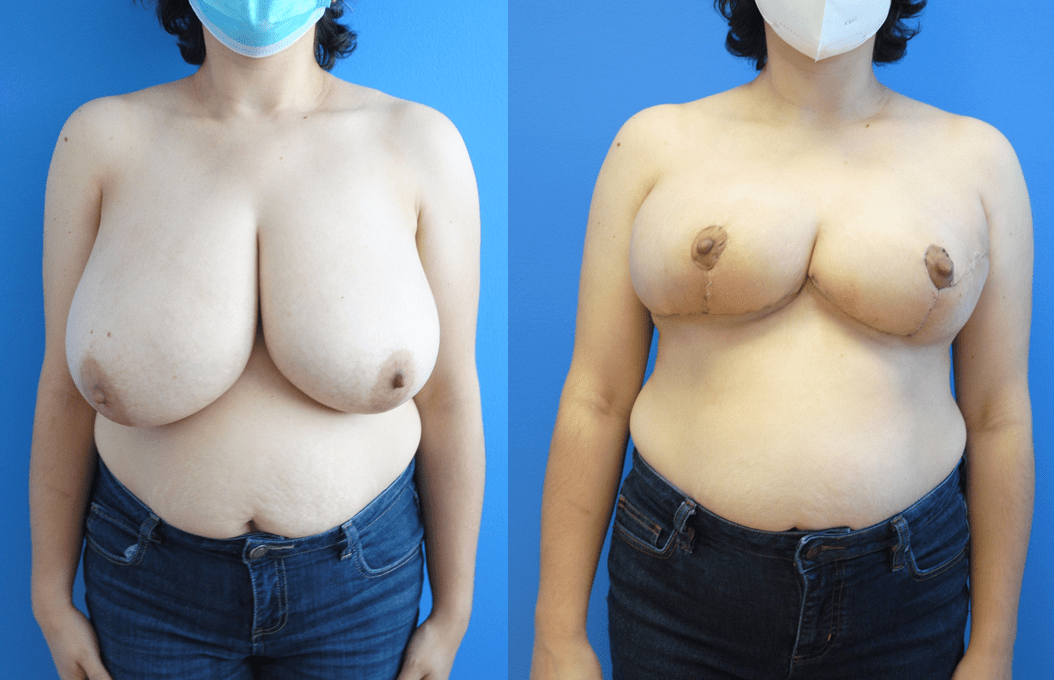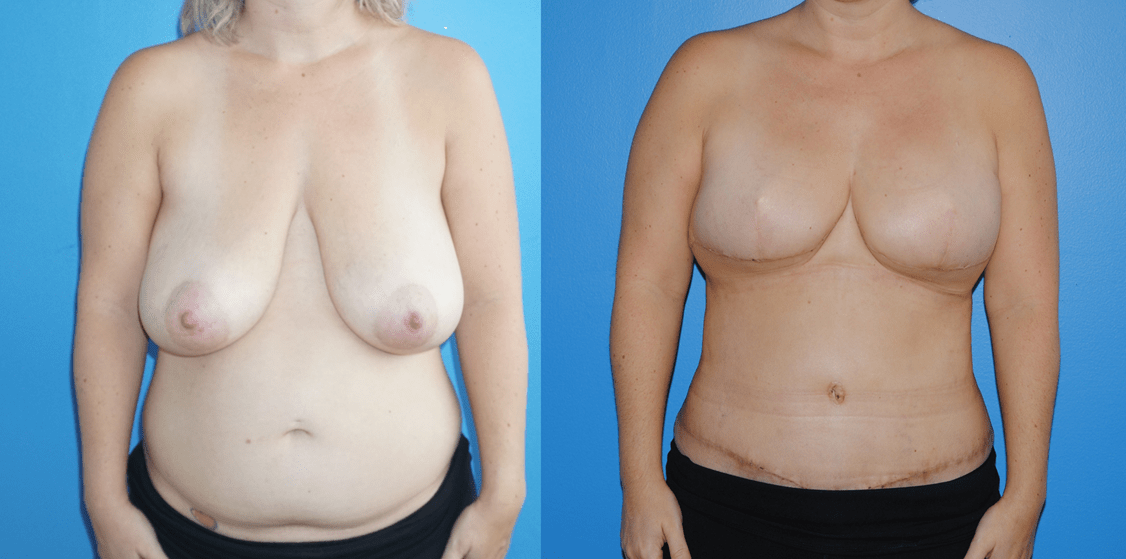DIEP flap reconstruction can be used to reconstruct the breast in patients who have undergone radiation who are no longer candidates for implant reconstruction. In the radiated breast, the skin may not tolerate an implant or may be more susceptible to infection. In these patients the breast is reconstructed with the patients own body tissue. This photos shows a bilateral…
